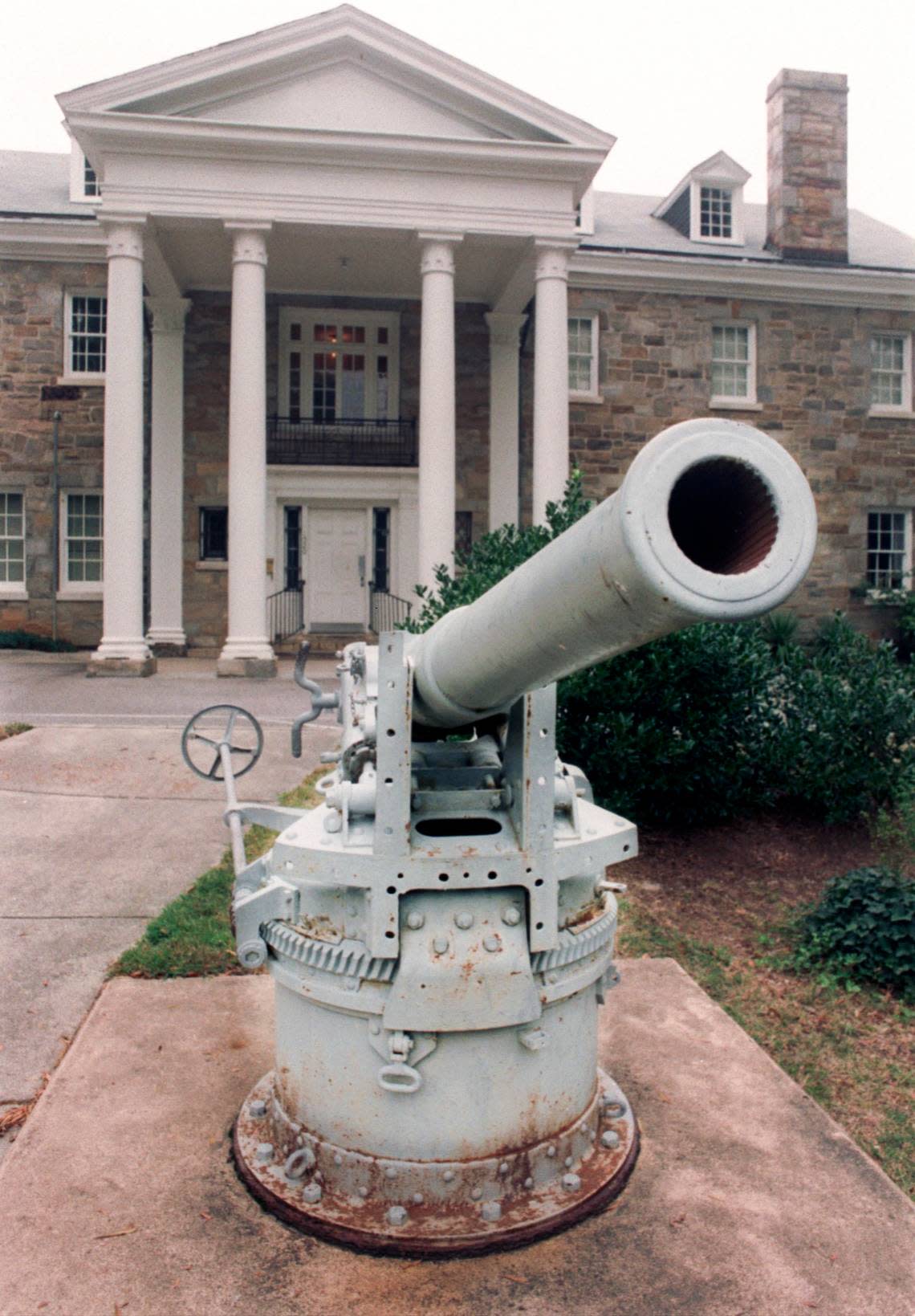After decades on a Raleigh street, a German naval gun has a new home on the Outer Banks
A gun from a German Navy ship that was mounted on a residential street in Raleigh for decades has found a new home on the Outer Banks.
The World War I-era deck gun and its turret stood in front of Wakestone, the former home of Josephus Daniels, longtime owner and publisher of The News & Observer. Daniels was also U.S. secretary of the Navy from 1913 to 1921, which is how he came to acquire the gun.
Wakestone is now gone, the property divided into 11 house lots. But rather than send the gun to a scrap yard, the developer donated it to the Graveyard of the Atlantic Museum in Hatteras. Late last month a crane carefully lowered the 1,500-pound cannon onto the museum’s front porch.
The gun spent most of the last two years at Clemson University’s Warren Lasch Conservation Center in North Charleston, S.C., where layers of paint were carefully removed and the metal cleaned. Conservators identified what they considered the original paint color and had it replicated and applied to the restored gun, said Joseph Schwarzer II, director of the N.C. Maritime Museum System, which also includes museums in Beaufort and Southport.
“It’s what is called a German Navy gray. It’s kind of a gray with a slight hint of blue in it,” Schwarzer said. “It looks lovely.”
It’s not certain where they gun came from. It’s thought that it was taken from a German ship that the U.S. acquired just after World War I, possibly one of two vessels that U.S. Army Gen. Billy Mitchell and his pilots bombed to prove that airplanes could sink ships. Schwarzer said the gun may have came from either the German cruiser Frankfurt or the battleship Ostfriesland, both sunk by Mitchell’s pilots outside Chesapeake Bay in 1921.
“We can’t confirm that yet,” he said. “We do know it’s clearly German, and it’s clearly off either a battleship or a cruiser. But we’re not exactly sure which one. So we’re still working on that.”
From National Historic Landmark to rubble
The museum hopes to learn something of the gun’s origin by searching state and federal archives for Daniels and his successor at the Navy, Edwin Denby. It was Denby who arranged for the weapon to be delivered to Raleigh, reportedly at Daniels’ request for “a gun of some kind,” according to a Saturday Evening Post article in 1947.
“Hopefully somewhere in the correspondence someone will mention where it’s from,” Schwarzer said.
Daniels had his gun placed outside the front door of Wakestone, pointing out toward Caswell Street on the edge of the Hayes Barton neighborhood. It remained there after he died in 1948 and after the Masons bought the gray stone mansion and turned it into a lodge with a large auditorium added to the back.
Wakestone was declared a National Historic Landmark in 1976 and a Raleigh Historic Landmark in 1990.
The national landmark designation was more prestigious, but the local landmark came with rules that protected the home from demolition.

But the killing of George Floyd by Minneapolis police officers in May 2020 focused the country’s attention on racism and prompted a reevaluation of Daniels and his legacy. An avowed white supremacist, Daniels had used his newspaper to vilify North Carolina’s Black residents and stoke outrage among whites over political and economic gains by Blacks, most notably in the months leading up to the violent overthrow of the elected biracial government in Wilmington in 1898.
At the request of the Masons, who had been trying to sell the property for years, the Raleigh Historic Development Commission and the City Council voted to rescind the landmark status in early 2021. Seven months later, the new owners, Beacon Street Caswell LLC, began demolishing Wakestone to make way for new houses.
Beacon Street offered to donate the cannon to the N.C. Museum of History in downtown Raleigh. The director there said he didn’t have anywhere to put it and contacted Schwarzer to see if he might want it. Because of the long ties of the Daniels family to the Outer Banks, and the German Navy’s threat to shipping off the coast during World War I, Schwarzer said yes.
The gun is also a rare specimen, he said. This particular German L/30 quick-firing 88-millimeter deck gun may be one of only three still in existence.
The Graveyard of the Atlantic Museum is closed through the fall while the exhibits are rebuilt and reinstalled. For information, go to graveyardoftheatlantic.com/.
